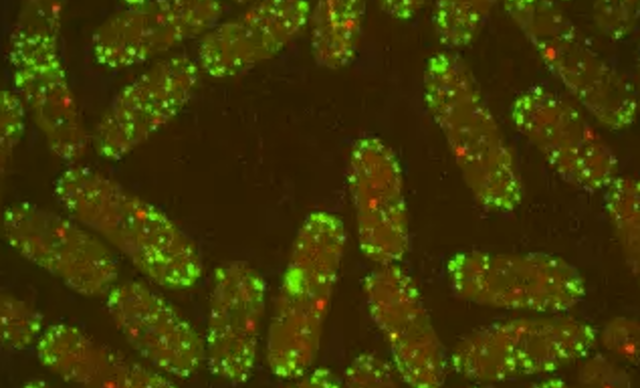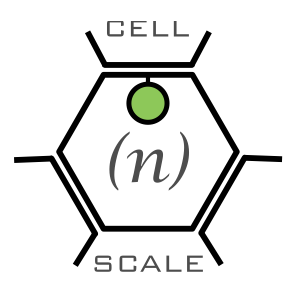Laureates of the groundbreaking projects

2021 laureates
-
Polarization Microscopy for Imaging of Membrane Organization (PoMIMO)
J. Salamero (coordinator, team leader UMR144), C. Kervrann (head of the SERPICO, INRIA), P. Bassereau (team leader UMR168), L. Johannes (team leader UMR3666), C. Gueudry (R&D, industrial partner)
Objective: Create a new imaging approach that will not only provide novel information about endocytosis, but will have the potential to be applied to all topics where the spatial and molecular organization of lipids/proteins defines both the structure and function of these assemblies (i.e. mitochondria cristae, MAMs....) in reconstituted systems and in living cells.
Methods/Technologies: fluorescence polarization microscopy ; lattice light sheet microscopy; single molecule localization microscopy; structured illumination microscopy; multi-angle total internal reflection fluorescence microscopy: reconstituted systems (GUVs, SLBs)
Keywords: sparse variation; inverse problems; deep learning; spatial high-resolution maps; Shiga toxin; lectin; glycolipid; raft-type nanodomain; clathrin-independent endocytosis; company participation
2016 laureates
-
Designer DNA nanodevices for measuring forces at nanoscale on membranes (DNA-ForceSensor)
L. Johannes (coordinator, team leader UMR3666), D. Bhaia (team Johannes UMR3666), P. Bassereau (team leader UMR168), R. Rodriguez (team leader UMR3666)
Objective: Develop novel force sensors to measure such fluctuation forces operating at nanoscales on membranes using DNA-based nanomachines coupled to Shiga toxin (or other membrane proteins) using single molecule FRET as a readout.
Methods/technologies: DNA nanodevices, CLICK chemistry, giant unilamellar vesicles (GUVs) and micropipette aspiration, single molecule FRE
Keywords: physics and chemistry-based tools, biomimetics, membrane dynamics
-
Probing chromosome mechanics and organization with intra-nuclear magnetic manipulation (ChroMag)
M. Dahan (coordinator, team leader UMR168), D. Fachinetti (team leader UMR144), A. Coulon (team leader UMR168/UMR3664)
Objective: Develop a groundbreaking method combining advanced magnetic micromanipulation techniques with CRISPRCas9/ TALE technologies to mechanically manipulate specific genomic loci at the single cell level in living cells.
Methods/technologies: Genome engineering, nuclear membrane tethering, highthroughput single molecule fishing (multicolor; magnetic micromanipulation)
Keywords: chromatin dynamics/architecture, single molecule analysis and tools
-
Spatial and biochemical regulation of organelle identity (orgID)
M. Coppey (coordinator, team leader UMR168), F. Perez (team leader UMR144), P. Sens (team leader UMR168), B. Goud (team leader UMR144)
Objective: Shed light on the physical and biochemical principles that integrate molecular interactions with material fluxes to define organelle identity; combining acute perturbations on single cells and theoretical modeling to decipher the relative contribution of spatially dependent fluxes and biochemical interactions in defining organelle identity.
Methods/Technologies: Reversible chemical and optogenetic protein-protein interaction manipulation, theoretical modeling at the molecular and organelle levels
Keywords: biomechanical and biochemical regulation, organelle identity, optogenetic tools
-
How is cell size determined (CELLSIZE)
M. Bornens (coordinator, team Goud, UMR144), JF. Joanny (team Sens UMR168), C. Lamaze (team leader UMR3666)
Objective: Investigate the extent to which cell size relies on cytoplasmic mechanism rather than on DNA-binding protein titration.
Methods/technologies: CTR-less cells, lens-free microscopy, siRNA, Crispr/Cas9
Keywords: cell size, intracellular transport, biomimetics
-
Recapitulation of spatial constraints on neocortical stem cells: impact on cell fate and mitotic accuracy (StemDivPhys)
A. Baffet (coordinator, team leader UMR144), C. Villard (team leader UMR168), V. Marthiens (team Basto UMR144)
Objective: Develop novel biophysical tools to recapitulate the space constraints and compartmentalization faced by individual neural stem cells, to investigate the contribution of cortical tension on spindle robustness and to physically isolate neural stem cell cytoplasmic processes and investigate polarized trafficking mechanisms.
Methods/Technologies: Primary culture of embryonic neural stem cells in vitro, microfluidics, micropatterns (RNA-seq, Mass-spec, FISH)
Keywords: cellular trafficking, cell polarity, microfluidic tools, mechanical contraints, mitosis
